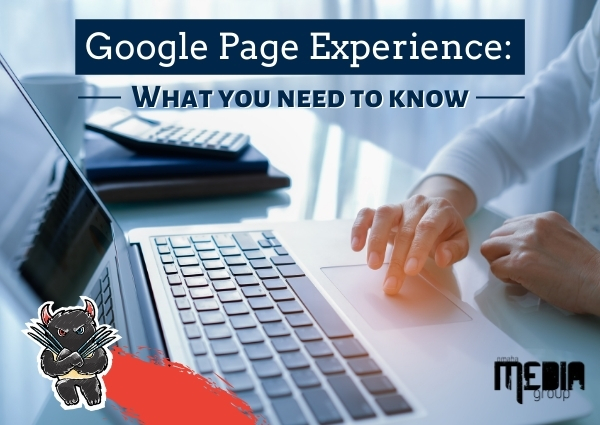 https://www.omahamediagroup.com/images/uploads/monster_gallery/Omaha-Media-Group-Black.jpg
admin
https://www.omahamediagroup.com/images/uploads/monster_gallery/Omaha-Media-Group-Black.jpg
admin
Google Page Experience: What you need to know

Google announced the latest update coming to the search engine around May 28, 2020, now being the nice tech conglomerate they are, have decided to hold off on this update until 2021. While there is no definitive date in 2021, which is only months away, this gives companies and small businesses enough time to work on updating their website.
This new aggregated ranking signal in Google algorithm will affect search engine rankings for entire websites or specific pages. Google intends to focus on the user's overall experience with websites and their overall perception of the website and its pages.
This comes as no surprise to those in the SEO industry who have been working to follow Google guidelines and algorithm updates circa Penguin and Hummingbird. However, this upcoming update will hold a lot of weight in the search engine, it could be even bigger than previous large Core Updates and Algorithms such as Penguin and BERT.
With the Google page experience ranking and google page experience update coming sooner than later, it is important for companies and small businesses to implement the following changes to not lose any website traffic or keywords from the google page experience update.
User experience
User Experience (UX) is the overall feeling and way a user experiences and interacts with a website. If you ask a consumer a yes or no question on a number of different topics, you want them to answer them with yes, that is how your website’s design should be. A consumer should see the design, its elements and be pleased with the overall functionality and experience of the website down to the content and SEO.
With this in mind, UX methodology in design and development project should have been at the forefront since 2010, but in 2020 and moving forward, a website that is a bit “meh” in the design and development side can find itself hurting in search engines even more than before.
Loading speed
At one point in time, a website had a short grace period of loading time of three seconds; however, with the latest update a website and individual pages need to load within two seconds or less. While second might seem like the smallest difference between loading speeds, it does make all the difference.
On the same hand, hey developers, Google is looking for code to respond and provide the best experience in less than 100 milliseconds. Loading speed factors start with the code and end with the images and content that is on said page. If the code is bulky and outdated and images are massive and taking longer to load, there is that one second difference that each website once had.
Interactivity
How long does it take when a consumer clicks on a box on your website? The longer it takes, the longer the consumer will get annoyed and this affects the overall experience. What about forms that do not function properly. Yup, that will affect the website as well. This isn’t just about loading speeds, but it also analyzes how the elements become ready for a consumer to use.
Cumulative Layout Shift
This one is the biggest change out of all of the Google page experience update because it fully focuses on the user experience on the website or single page. If an ad pops up, where are consumers clicking? Are they frantically searching for it to leave? What about not being able to find the close option? This will affect the website.
To be honest with you, anything that would frustrate or annoy a consumer is part of this.
Mobile friendliness
96 percent of Americans own a smartphone and mobile device website search and traffic has continued to rise in popularity overtime with Google and other search engines.
However, with this in mind, only 70 percent of websites are mobile friendly. This update is nothing new in the website design and development industry with being launched over four years ago.
Even in 2018 with google putting an emphasis on any site's ranking slowly falling due to other new, mobile friendly sites taking its place, a company cannot have a dinosaur website.
Safe browsing
In an ability to continue to provide a safe browsing experience to its users, Google has put an even bigger emphasis on safe browning and security on websites. This affects the coding behind the website. Safe and clean website code helps to ensure that the website is safe for consumers to browse with no malware detected.
This means any website that has gotten hacked or are prone to hacks and malware, it is time to get it updated.
While not all of these updates on the Google page experience ranking are new ones, they are all imperative to the overall success of a company’s digital presence. This is because, even with the best SEO strategies in place, a company can find their website lacking the qualified websites and leads it was searching for because of these main elements.
Hire the team to help you with your website, app, or other marketing needs.
We have a team of digital marketers who can help plan and bring to life all your digital marketing strategies. They can help with social media marketing, email marketing, and digital advertising!
CONTACT US

Comments